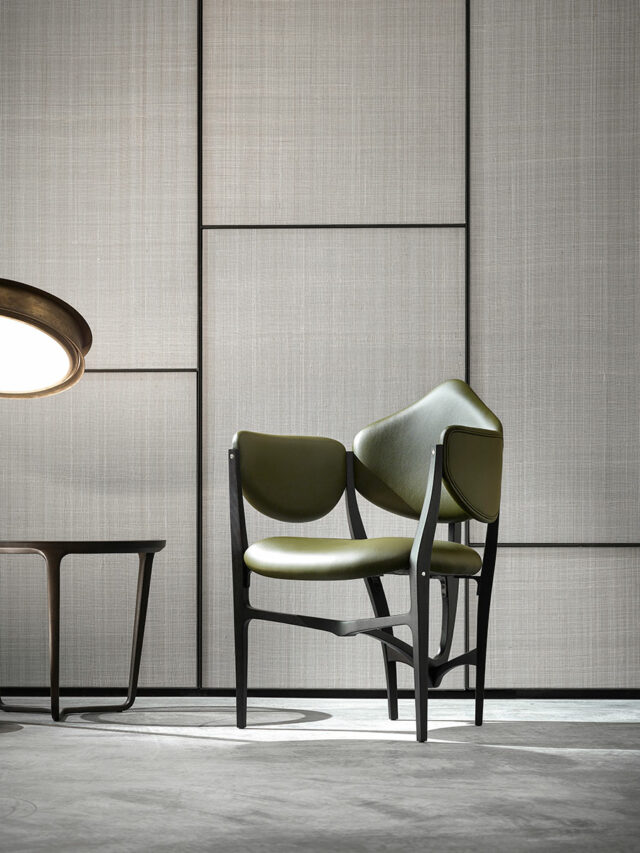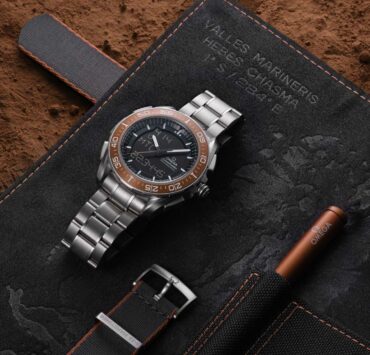Design made in Italy has been dictating the rules in the design world since the 1950s, when, with post-war reconstruction, there was a period of great expansion in furniture. During that time, the search for new materials and new shapes, thanks to chemistry and mechanical engineering, experienced great fortune. This period was the origin of many products that, over time, became increasingly popular until they became icons, thanks to their instantly recognizable image. However, in seventy years, many things have changed.
In the 1960s, for example, plastic was one of the most widely used materials to manufacture furniture and accessories; today, this is no longer the case. For painting, they used paints with solvents, which today have given way to more environmentally friendly, water-based paints. The list goes on: from rare woods that are no longer used to upholstery made of less polluting materials, to LED lighting replacing incandescent lamps. Thus, many brands kept faithful to the world-famous, iconic design but re-edited them to fit modern requirements.
To adapt to the new contemporary consciousness, the products are often made of different materials, which in some cases lead to altered shapes or functions. In other cases, however, original designs have been rescued, and collections with designs that were already existing but never built, have been brought to completion. Among all the icons in the history of Design Made in Italy, we picked out ten pieces “reloaded” in the last two years, either identical to the originals or interpreted with new materials, new functions, or new construction techniques.
THE TOP TEN PIECES OF “RELOADED” DESIGN MADE IN ITALY
Le Bambole, by Mario Bellini for B&B Italia
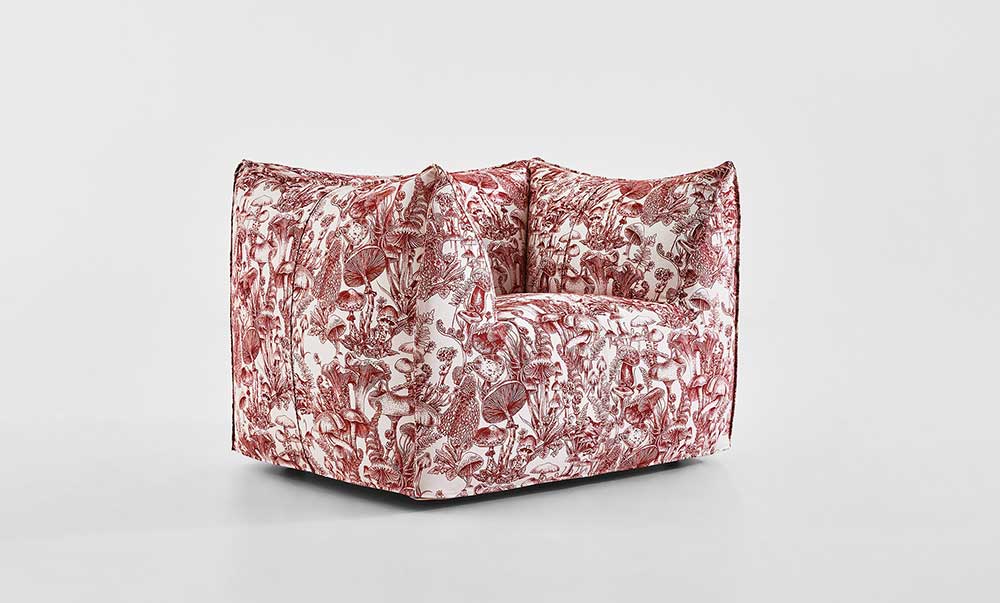
Le Bambole is a series of upholstered furniture – armchairs, sofas, beds – designed in 1972 by Mario Bellini for B&B Italia (at that time, C&B). The period is of great importance, as it was a critical moment for Italian women and their emancipation. In that context, Bellini designed Le Bambole, which also became famous for its ironic and irreverent communication.
The upholstered items featured a round and soft, cosy and informal shape with polyurethane upholstery, a hallmark of B&B Italia from the beginning, welcoming like a hug. A strong point of the Bambole was also the advertising campaign: in Oliviero Toscani's photos, model Donna Jordan, bare-breasted, imitated the movements of a blond-haired doll. Irreverent, ironic, and even sexy, it is among the most legendary advertising campaigns in history, not only in the furniture industry. The dolls were awarded the Compasso d'Oro in 1979 and have been in the B&B Italia catalogue for 50 years.
So it’s no surprise that 50 years after the first edition, B&B Italia decided to celebrate Le Bambole and reintroduce the famous pieces, updating them to 2022. The 2022 Le Bambole series now comes with new materials: the polyurethane has been reduced to a minimum, and the upholstery is recycled polyethylene, with thermoplastic elastomers and a recycled PET undercover. The choice of materials allows for a totally disassemblable product at the end of its life. In terms of fabrics you can choose between, sable, floral, or full-grain leather.
A special edition with a Stella McCartney covering, Fungi Forest, was presented in June 2022 at Milan Design Week and will enter the collection in the coming months.
The Arco lamp, by Achille and Pier Giacomo Castiglioni for Flos
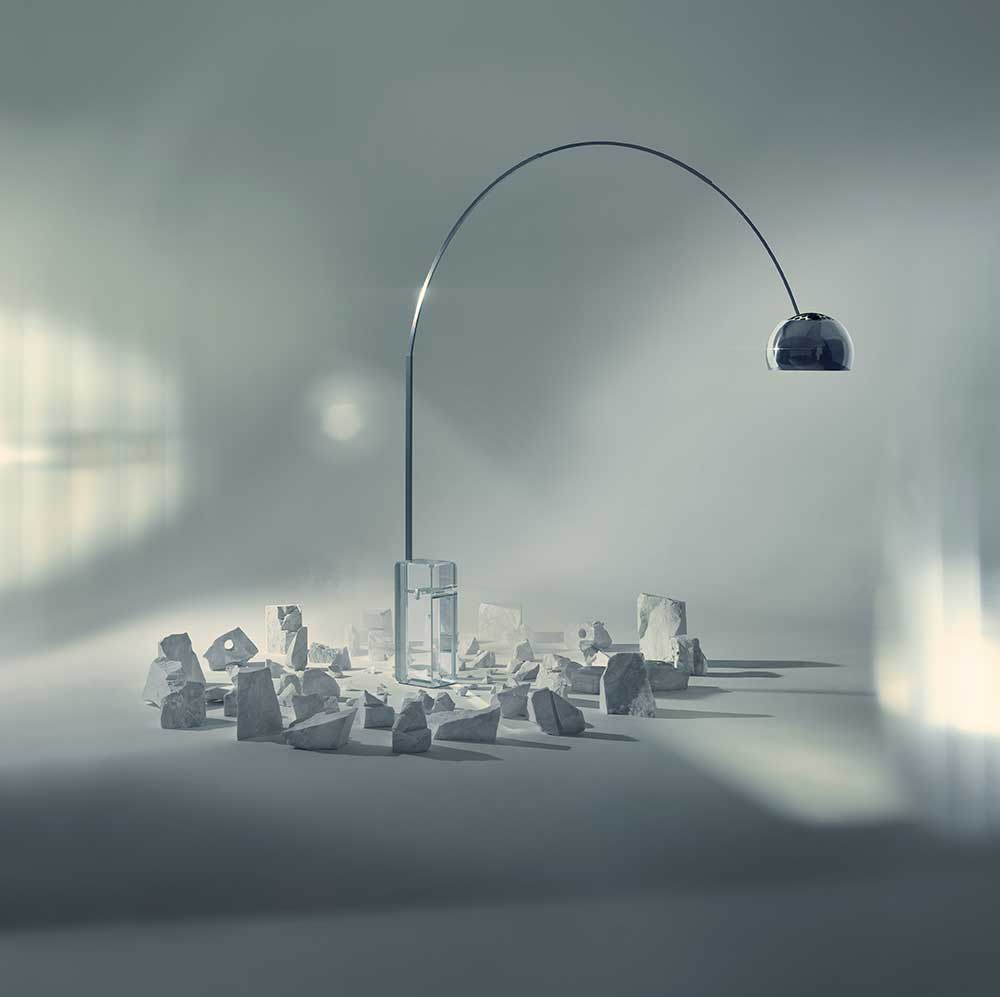
Arco, the lamp with an aluminium arc that places the shade in the centre of the table, is turning 60 years old, as is Flos, the company that manufactures and sells it. In the 60s, it even became a comic book icon. The lamp came from the idea of having a light illuminating the centre of a table, but not having it hanging from the ceiling. Thus, the Castiglioni brothers designed a lamp with a marble base, a stem consisting of a metal profile, and a semi-silvered cap containing the light source, which today is LED.
The 60th-anniversary celebration version is a limited edition only available in 2022, with the stem and dome the same as the original, but the base made of lead-free, transparent crystal glass, generally used for optical prisms, making the mechanics inside the lamp visible. The 60th-anniversary special edition is a beautifully crafted product that requires long lead times, as it is made with special machinery. Moreover, given the valuable nature of the purchase, Flos has set up a particular encrypted NFC tracking system, which guarantees collectors the originality and uniqueness of each numbered piece, converting it into a highly sought-after icon of Italian design.
Quaderna, by the Superstudio group, produced by Zanotta
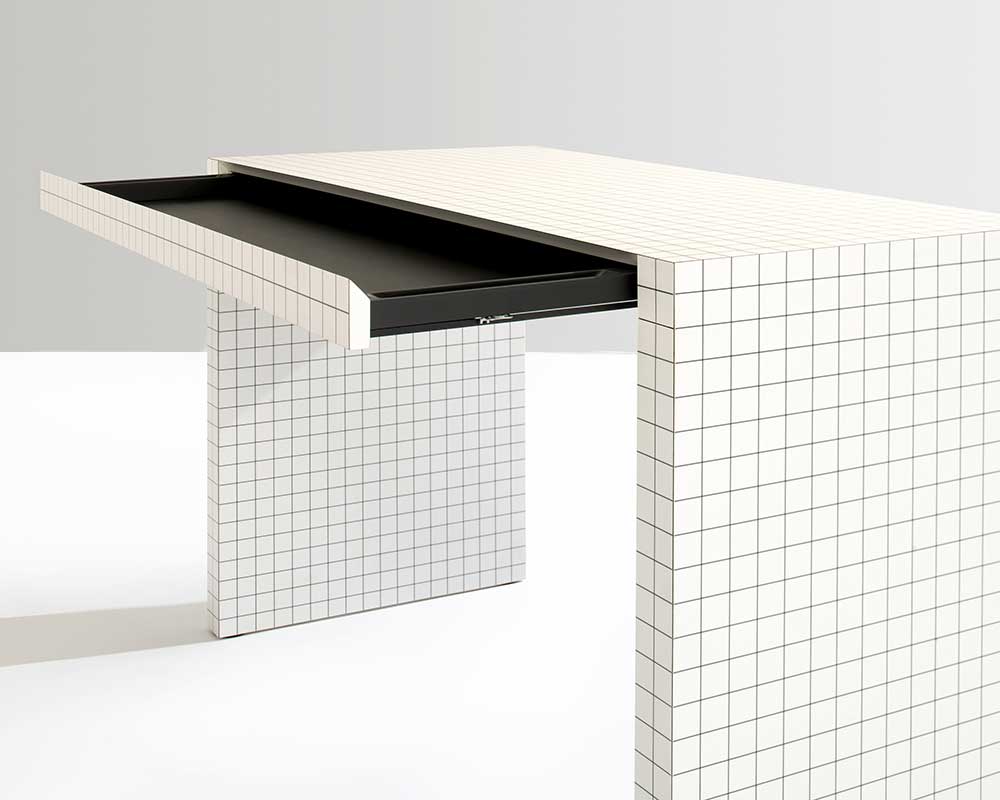
The Quaderna collection, designed by Superstudio between 1969 and 1972, and manufactured by Zanotta since 1972, is turning 50 this year. Zanotta added three items to the collection that had never been put into production before to celebrate the anniversary: a writing desk and a small table, original unpublished designs from Superstudio's Misura M Series catalog, plus a unique piece, a rug, a faithful reproduction of an unpublished Histogram of Architecture, provided by the Cristiano Toraldo di Francia Archive, Zanotta's tribute to the Florentine group.
The products of the Quaderna Series are the result of a highly industrialized process and, at the same time, meticulous craftsmanship, a process that allows for an impressive optical effect. The hallmark of the Quaderna collection is, in fact, the perfect alignment of the joints to obtain surfaces with perfectly aligned squares. To achieve this result, only one sheet of laminate must be used for each piece, applied individually following a precise succession.
The difficulty in making the various joints, unfortunately, makes it impossible to detach the legs from the top even during transport. This is an extra layer of complexity, however, which explains the uniqueness of the idea.
Cassina, Leggera chair, by Gio Ponti
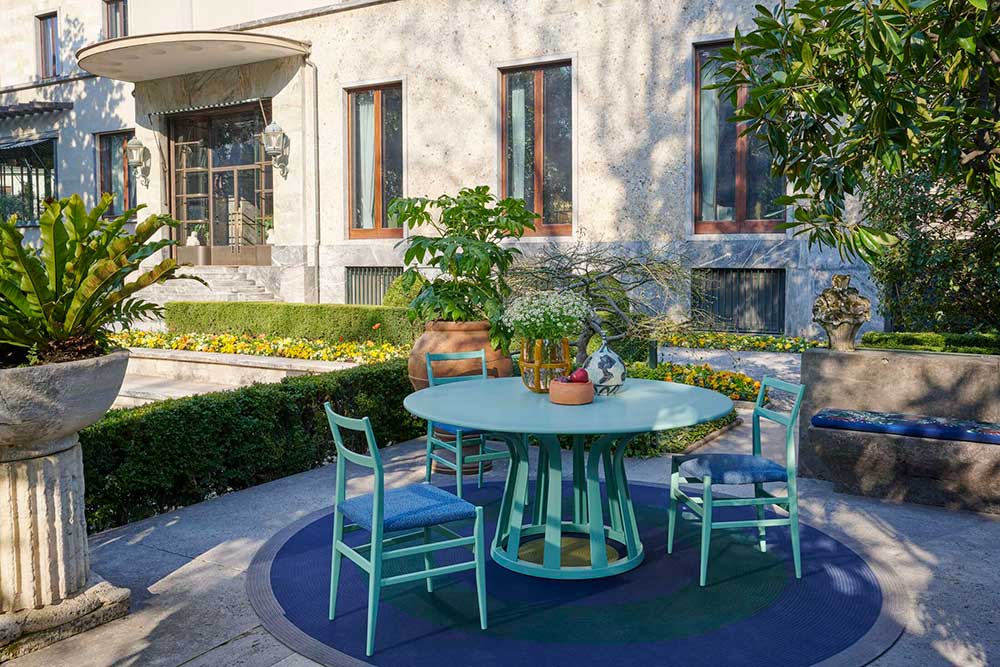
The Leggera chair by Gio Ponti – not to be confused with the Superleggera – is one of the first results of Gio Ponti's research on the topic of lightweight wooden chairs, contemporary reworkings of the classic chair by Liguria, the Chiavarina. The 646 Leggera, which dates back to 1952 and is also produced by Cassina, is a discreet and modern chair. Lightweight and essential, it is distinguished by its pointed supports and slightly bent back design.
It is assembled only with joints and glue, without screws or nails, and is distinguished from the Superleggera by its circular-shaped uprights. Today, Cassina is reissuing the piece in an outdoor version that looks very similar to the original wooden furniture, but is actually very different. In the new outdoor version, the chair is made of austenitic stainless steel, AISI 304, built using a technique used for Formula One cars, hydroforming, which allows the original shape to be maintained.
The chair is available in ivory, mud, and green. However, the feeling is that the steel Leggera, although as beautiful as the wooden original, is ultimately a bit too heavy, compared to the weight of the 1950s chair.
Storet, chest of drawers by Nanda Vigo for Acerbis
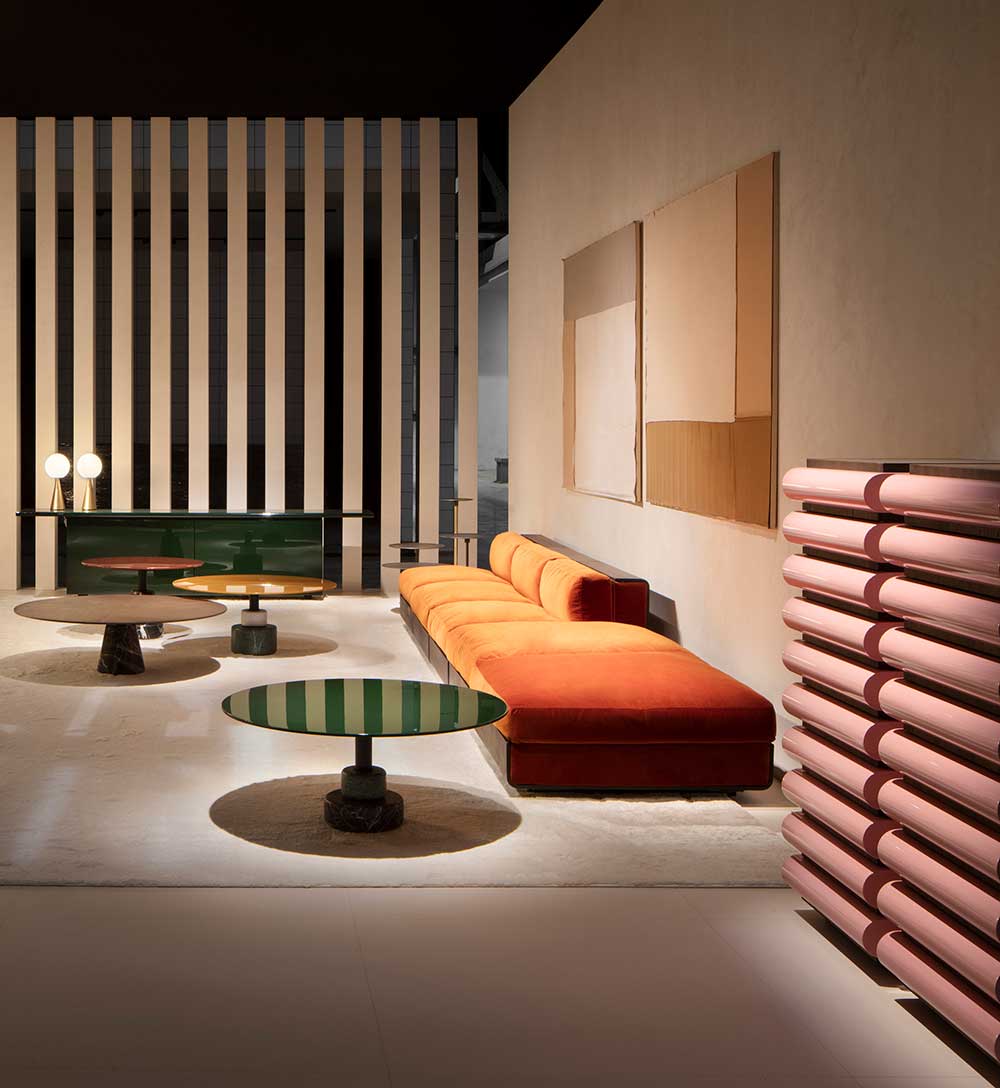
Acerbis, a company founded in 1973 and acquired by MDF Italia in 2019, entrusted Francesco Meda and David Lopez Quincoces with art direction in 2020. From this collaboration came the idea of Remasters, a collection of Acerbis classics re-edited or made for the first time. The latter are designs never made because they were too expensive, or because they were too advanced compared to the technologies available at the time they were first designed. Some are even products already in the catalogue, but now re-edited in a new version, updated with today's materials and technologies.
One such product in our selection of the top “reloaded” design pieces Made in Italy is the Storet chest of drawers, designed by Nanda Vigo in 1994 as a four-drawer night stand. Today, Acerbis offers it in a new version, as a ten-drawer. The current release features state-of-the-art telescopic slides, and the finish lacquer is less polluting compared to past editions. The frame is made of MDF, with drawers of plywood, and the distinctive front, with drawers with glossy lacquered mouldings, is in a range of bright colours burgundy, pink, dark green, mustard yellow, brick red, clay, white, and black – which create an interesting contrast with the dark-stained ash cabinet body.
Soriana, by Afra and Tobia Scarpa for Cassina
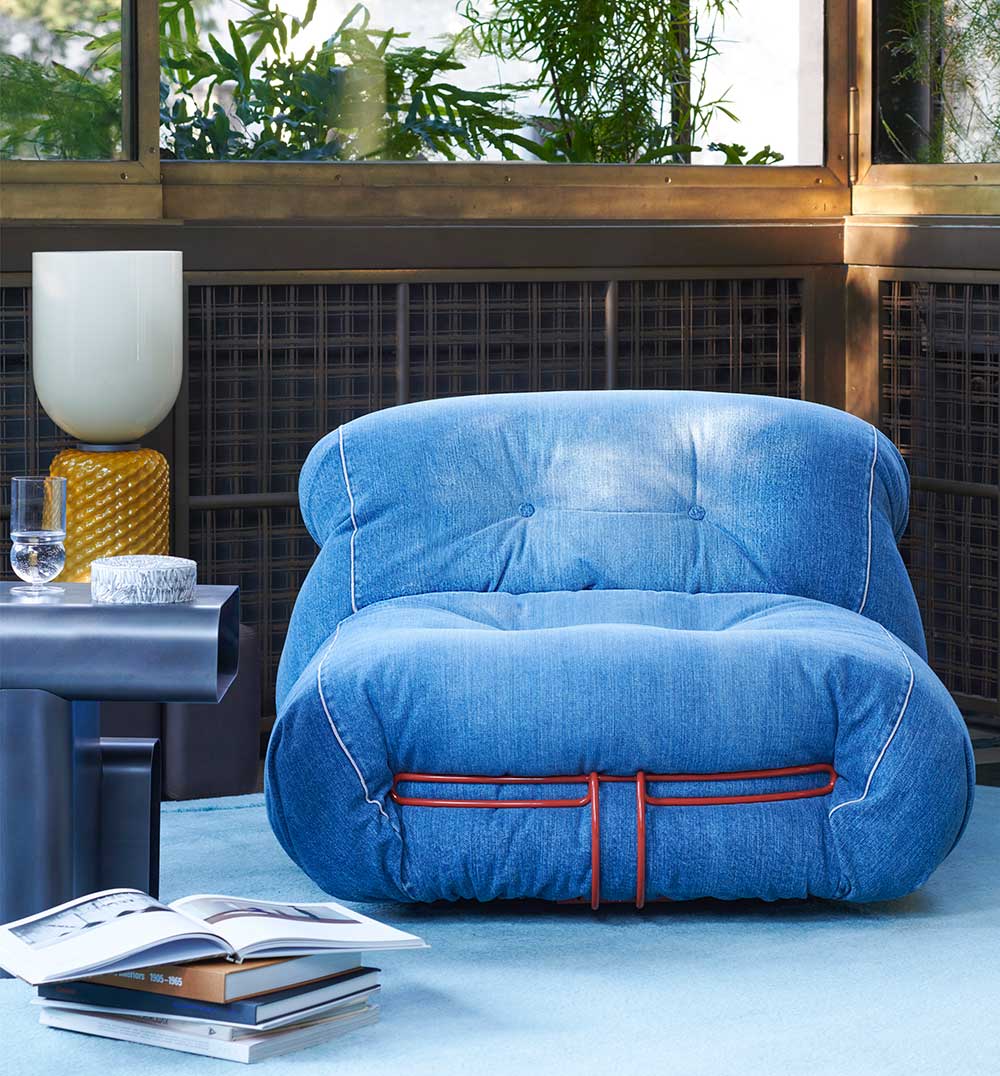
Consisting of a two-seater armchair and sofa, Soriana is a collection that was awarded the Compasso d'Oro in 1970. To this day, it is one of the most recognizable designs from Cassina. The metal frame that surrounds and supports the seat and back features a distinctive shape, making the upholstered chair an icon of the 1970s, along with the roundness of the cushions and the distinctive upholstery, fabrics and leather.
In 2022, Cassina offers the Soriana armchair in a new, limited-edition version, upholstered in denim, with the frame in white, blue, black or red metal. The denim is a Japanese fabric, a selvedge denim that outlines the side profiles of the armchair. It is available in the colours Indigo Blue, Black and Ecru.
The materials used to build the Soriana today make the real difference from the 1970s model. The CARB*-certified wood panels with low formaldehyde emissions are recyclable. The upholstery is made from a series of bags filled with BioFoam microspheres, a durable, biodegradable, and compostable foam obtained from natural resources. On the other hand, comfort is provided by padding made of 100% recycled PET fibre from Plastic Bank. Finally, faded denim today is made through sandblasting with natural materials from ground walnut shells, much less polluting than the old-fashioned procedures.
Parentesi 50, a special edition of Parentesi, by Achille Castiglioni for Flos
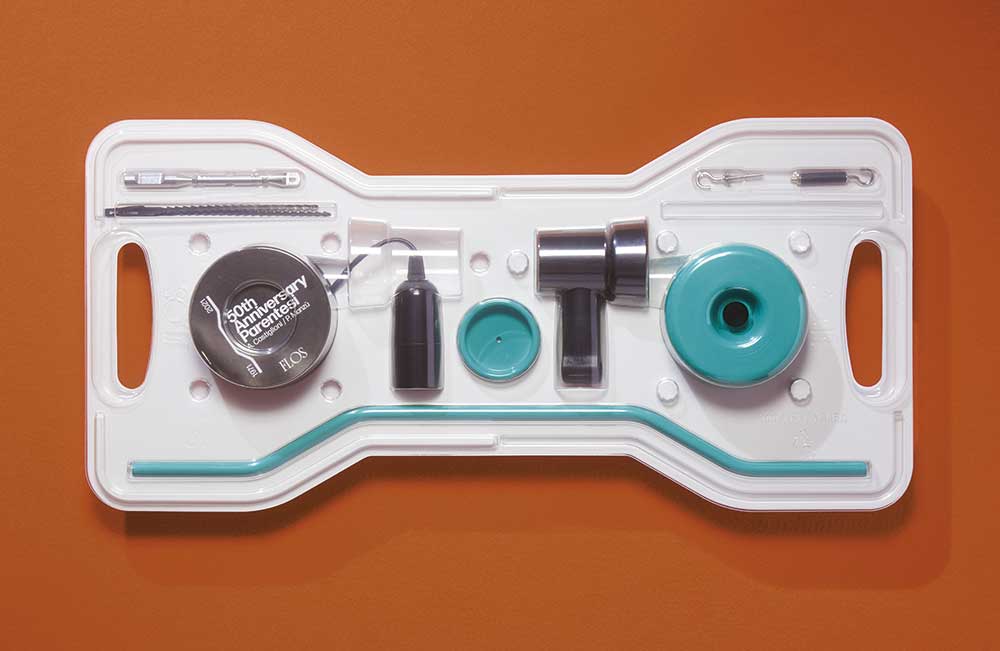
In 2021, the Parentesi lamp turned 50 years old, and Flos took advantage of the anniversary to launch an updated version. Winner of the Compasso d'Oro in 1970, the Parentesi lamp, designed by Achille Castiglioni from an original design by Pio Manzù, sold about 800,000 pieces from the year of its launch to 2020, which means this item is one of the most successful icons of design Made in Italy. Its construction is simple and straightforward: a metal wire attached to the floor and ceiling slides a light bulb from top to bottom, to provide light only where needed; the tension and position of the wire are ensured by a boat tensioner and a 5-kg weight.
The Parentesi 50 is identical to the first version, but is being offered in two different colours and packaging. For the Parentesi 50 Special Edition, Flos chose Turquoise and Signal Orange; Turquoise was a colour that Achille Castiglioni particularly liked, while Signal Orange was the shade that Pio Manzù used for his prototypes. The coloured base today is made of silicone.
An additional element of the reimagined design is in the packaging, revived in its original version. In fact, when it was created initially, the Parentesi was sold in a package consisting of two simple plastic shells, made in a single mold, a method that was abandoned after a few years. Today, thanks to new production capabilities and digitalization, making it possible to produce it in a cheaper and easier way, Flos reintroduced the original packaging.
Cactus, by Guido Drocco and Franco Mello for Gufram

The Cactus, a sculpture-hanger made of flexible polyurethane, first designed in 1972, is still produced by Gufram today with the same mold from 1972, finished by hand and coated with Guflac®, Gufram's special patented paint that allows to colour the polyurethane. However, Gufram in collaboration with many artists and designers developed different versions of the Cactus in other colours…
Psychedelic Cactus is the Cactus created in collaboration with Paul Smith; GOD is Maurizio Cattelan and Pierpaolo Ferrari's creation of the Cactus. Radiant Cactus is the version created with Ordovas Gallery; LebleuCactus is an homage to France. A very recent version from 2022 is the limited edition made in collaboration with The Andy Warhol Foundation for Visual Arts. Andy's Pink Cactus, Andy's Yellow Cactus and Andy's Blue Cactus are inspired by Andy Warhol's factory.
Stellage 52, by Gabetti & Isola, Raineri for Ceccotti
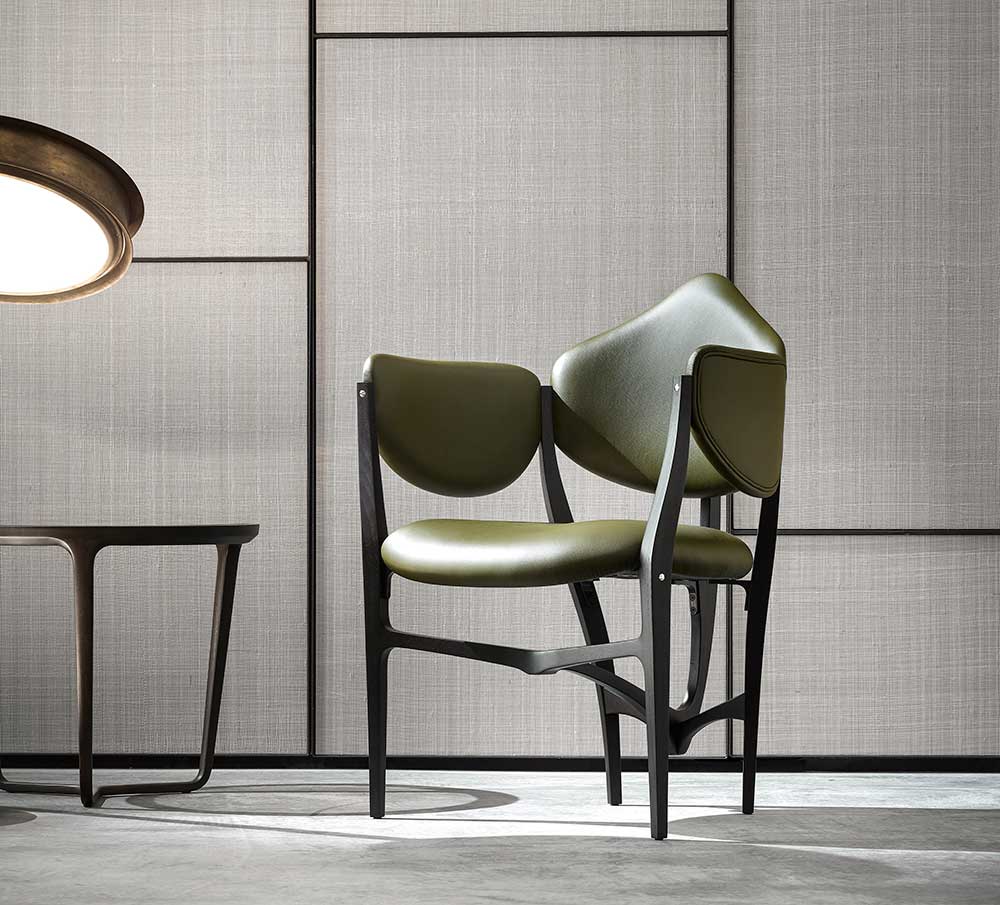
Stellage was the name of the collective, formed by Gabetti & Isola and Raineri, which won a competition announced in 1952 by the Turin Chamber of Commerce to design and furnish the building of the city’s new Stock Exchange. The Stellage chair, designed in 1952 for that occasion, later became an icon of Italian design, and today can be found in major collections, including the design collection of the MoMA in New York. In 2022, for its 70th anniversary, Ceccotti Collezioni decided to revamp the armchair under the name Stellage 52, and market it for the first time as a true breakthrough of design Made in Italy.
The unpublished design of the armchair is the brainchild and initiative of Lodovico Gabetti and Fabrizio Pellegrino, already active in the re-edition of Gabetti & Isola furniture with the Gabab studio in Turin. The new edition respects the original design with a few structural and decorative touches, such as the use of wholly redesigned metal brackets to improve the seat's stability, and the use of leather or nubuck upholstery. The finishes are solid American walnut in various colours. At the same time, the joints provided in the previous design to secure the upholstery remain hidden, leaving only the head of a screw on display. Stellage 52 is part of the new Masters Tribute line by Ceccotti Collezioni.
The Bird chaise longue
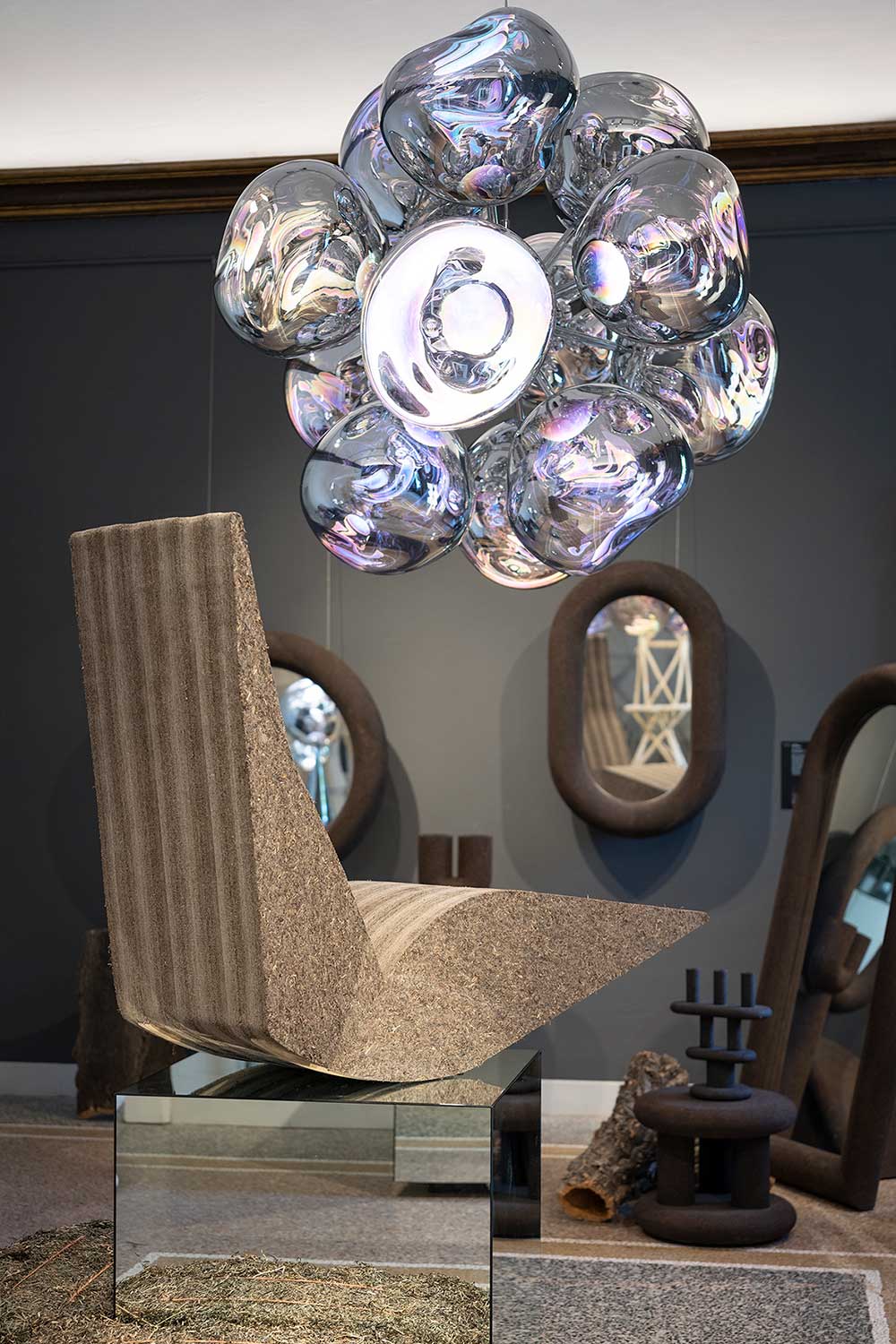
The Bird is the most recent among our list of legendary designs Made in Italy – however, it is no longer produced in Italy. Still, it rightfully belongs among the icons of Italian design. Designed in 1990 by Tom Dixon for the Metal London store in London, the Bird is a crossover between a chaise longue and a rocking chair. After its realization for Tom Dixon's store, Cappellini bought the copyright and produced it for several years in an upholstered version, thus turning it into a contemporary icon of Italian design. Later, Tom Dixon brought the copyright back in-house, and today The Bird is part of Tom Dixon’s product portfolio.
In 2022, Tom Dixon unveiled a new version of The Bird chaise longue, with upholstery of natural origin. For the “reloaded” version of The Bird, Tom Dixon used eelgrass, grown on the Jutland peninsula. which is currently mostly used for sound insulation mats and for padding. Tom Dixon then collaborated with the Danish company Søuld to make the Bird's padding from a natural material with requirements for fire resistance, bacteria resistance, endurance, and acoustic and thermal insulation. New material in upholstery lead to new, more sustainable products.
![]()
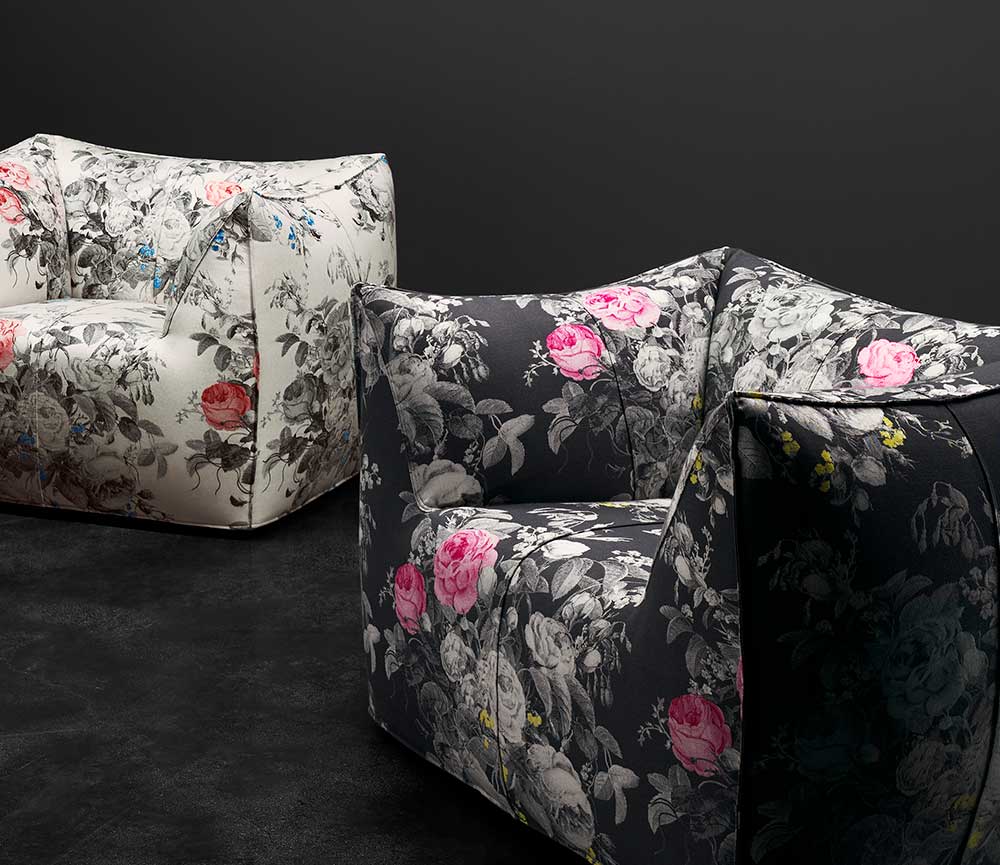
If you are interested in design, Noble & Style has much more to offer than just design Made in Italy. Are you travelling soon? Take a look at the ultimate luggage sets guide for this season’s travels. Or are you planning to go out this evening? Decide which one is your favourite from our top designer handbags. Staying home? Fitness might be the order of the day then. We have chosen luxury home gym equipment from the 12 best fitness brands, so you can keep your mind focused on exercise.
Last Updated on May 28, 2024 by Editorial Team
Architect and professional journalist, lends her expertise to the fashion section. The author of "Storia del Fuorisalone" (History of Milan Design Week), renowned for design interviews and distinguished work, showcasing her knowledge and passion for design and fashion.






